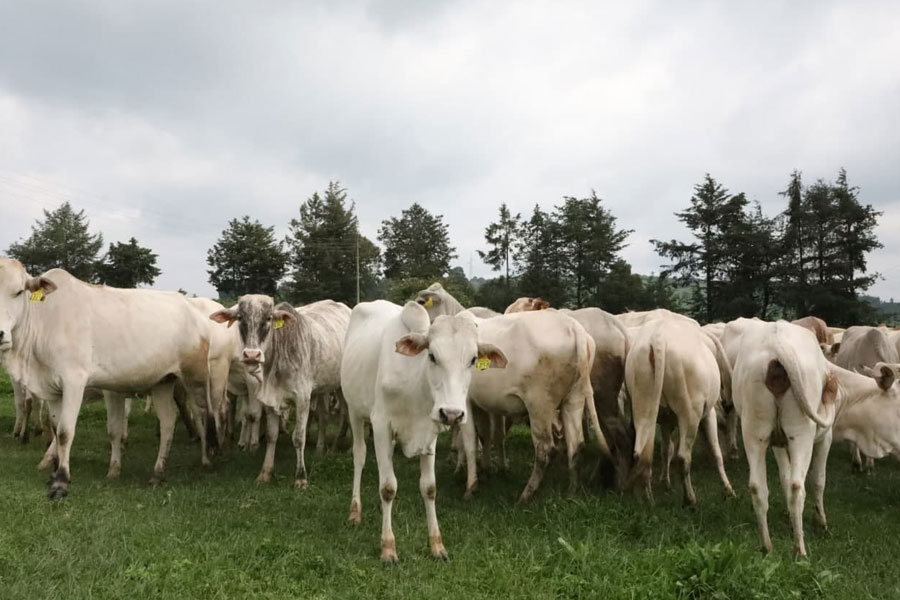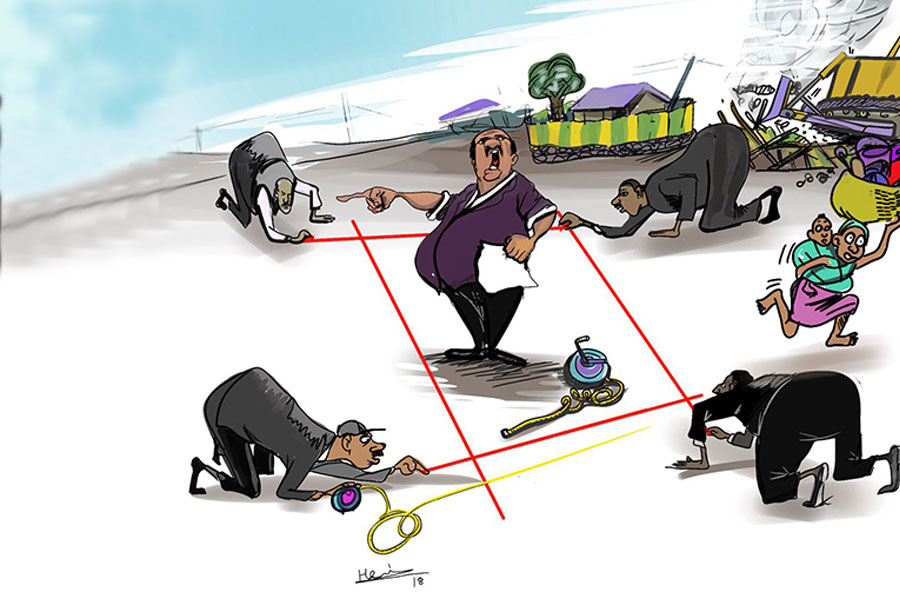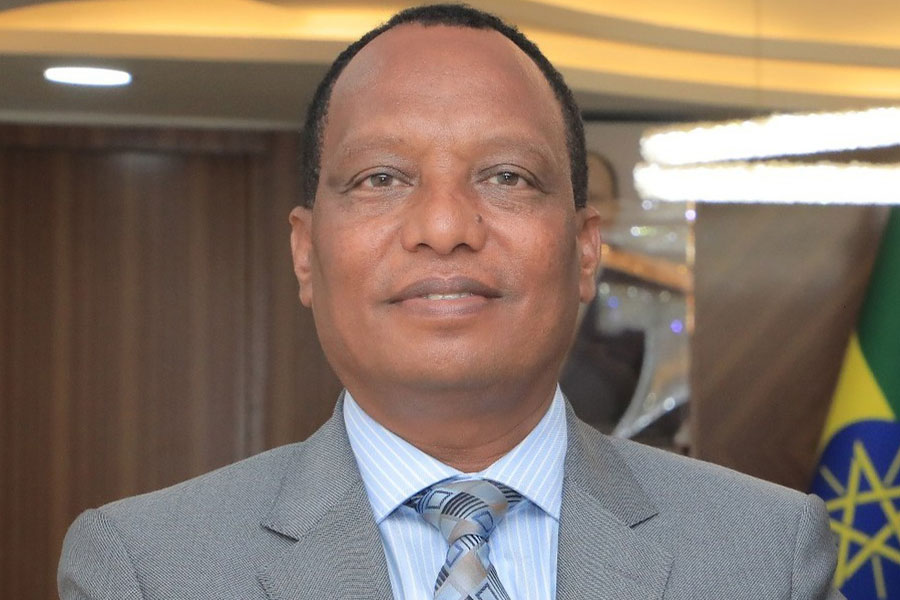
Viewpoints | Mar 04,2023
Dec 9 , 2023
By Daniel Kassahun (PhD)
Mekonnen Getachew's proposal for an artificial seaport in Ethiopia, connected to the Red Sea via a canal through Eritrea, has understandably stirred significant interest among the Ethiopian public. With over 100,000 views on YouTube, this concept represents hope for a country without direct sea access. However, a critical analysis of the proposal underlines several substantial technical, geological, and practical challenges that cast doubt on its feasibility.
While the Engineer claims to have adhered to the PESTLE framework, assessing the validity of his idea in the technological realm (the letter "T") proves challenging. Nevertheless, he advocated for establishing a multidisciplinary team based on his proposal. However, the flaws in his proposal come from a lack of rudimentary literature review and consultation with available geologists at the Addis Abeba Univerity (AAU) or the Ethiopian Geological Survey Institute.
Even basic discrepancies in distance measurements raise concerns, as the intended canal path through Eritrea is significantly longer than the stated 37Km, with the shortest distance from Ethiopia's border to the Red Sea coast being 60Km.
The Afar region, identified as the inland seaport, poses considerable geological challenges. Canalling through the Denakil Horst, a towering landmass exceeding 1,000m, presents a significant limitation, throwing a curveball into the canal construction plans. The chosen spot for the proposed seaport, the Afar Depression, rests on the unstable geological ground at the divergence of three tectonic plates. These plates gradually pull apart, subjecting the regional lithosphere to intense tension.
Erta Ale, one of the world's most active volcanoes known for its persistent lava lake, is in this region, alongside numerous fracture zones and rift valleys, making the landscape sensitive to interventions. The area's enormously fractured rocks may complicate foundation design, increasing the risk of water seepage. Given its history of frequent earthquakes, volcanic activities, and continuous continental rifting, it is apparent that this locale is not the most suitable for a large-scale infrastructure venture.
Scientific predictions suggest a long-term scenario where, with an expansion rate of one and two centimetres a year, Africa might eventually split into two continents. However, implementing huge geoengineering interventions of the proposed magnitude could alter the existing delicate balance and accelerate the pace of the divergence process.
The proposed seaport's weight, including docks, piers, buildings, storage facilities, and thousands of heavy trucks in and around the area, would put immense pressure on the already stressed lithosphere, potentially triggering seismic events. The extreme heat of the Danakil Depression, where temperatures reach a scorching 50°c, would render the proposed location for building a port inhospitable for workers and equipment.
The hasty presentation of this proposal without rigorous evaluation and professional input shows the need for a more cautious and informed approach to such ambitious projects. Ethiopia has a history of ill-conceived proposals, such as the failed attempt by the Derg regime to establish a large state farm in Sheneka, Bale, to say the least.
Putting aside the legal, geopolitical, and ecological challenges, Mekonnen's proposal to build an artificial seaport in the Afar region suffers significant shortcomings. The proposal should not override thorough scientific scrutiny and professional integrity. Given Ethiopia's leaders' desperate attempt to capture public attention about a seaport, the potential for impulsive actions should not be underestimated, posing a considerable risk.
PUBLISHED ON
Dec 09,2023 [ VOL
24 , NO
1232]


Viewpoints | Mar 04,2023

Advertorials | Sep 18,2025

Life Matters | Dec 31,2022

Fortune News | Jul 31,2021

Fortune News | Jul 31,2021

Viewpoints | Oct 12,2024

Viewpoints | Apr 13,2024

Fortune News | May 08,2021

Photo Gallery | 173681 Views | May 06,2019

Photo Gallery | 163901 Views | Apr 26,2019

Photo Gallery | 153929 Views | Oct 06,2021

My Opinion | 136548 Views | Aug 14,2021
Editorial | Oct 11,2025

Dec 22 , 2024 . By TIZITA SHEWAFERAW
Charged with transforming colossal state-owned enterprises into modern and competitiv...

Aug 18 , 2024 . By AKSAH ITALO
Although predictable Yonas Zerihun's job in the ride-hailing service is not immune to...

Jul 28 , 2024 . By TIZITA SHEWAFERAW
Unhabitual, perhaps too many, Samuel Gebreyohannes, 38, used to occasionally enjoy a couple of beers at breakfast. However, he recently swit...

Jul 13 , 2024 . By AKSAH ITALO
Investors who rely on tractors, trucks, and field vehicles for commuting, transporting commodities, and f...

Oct 11 , 2025
Ladislas Farago, a roving Associated Press (AP) correspondent, arrived in Ethiopia in...

Oct 4 , 2025
Eyob Tekalegn (PhD) had been in the Governor's chair for only weeks when, on Septembe...

Sep 27 , 2025
Four years into an experiment with “shock therapy” in education, the national moo...

Sep 20 , 2025
Getachew Reda's return to the national stage was always going to stir attention. Once...

Oct 12 , 2025
Tomato prices in Addis Abeba have surged to unprecedented levels, with retail stands charging between 85 Br and 140 Br a kilo, nearly triple...

Oct 12 , 2025 . By BEZAWIT HULUAGER
A sweeping change in the vehicle licensing system has tilted the scales in favour of electric vehicle (EV...

Oct 12 , 2025 . By NAHOM AYELE
A simmering dispute between the legal profession and the federal government is nearing a breaking point,...

Oct 12 , 2025 . By NAHOM AYELE
A violent storm that ripped through the flower belt of Bishoftu (Debreziet), 45Km east of the capital, in...